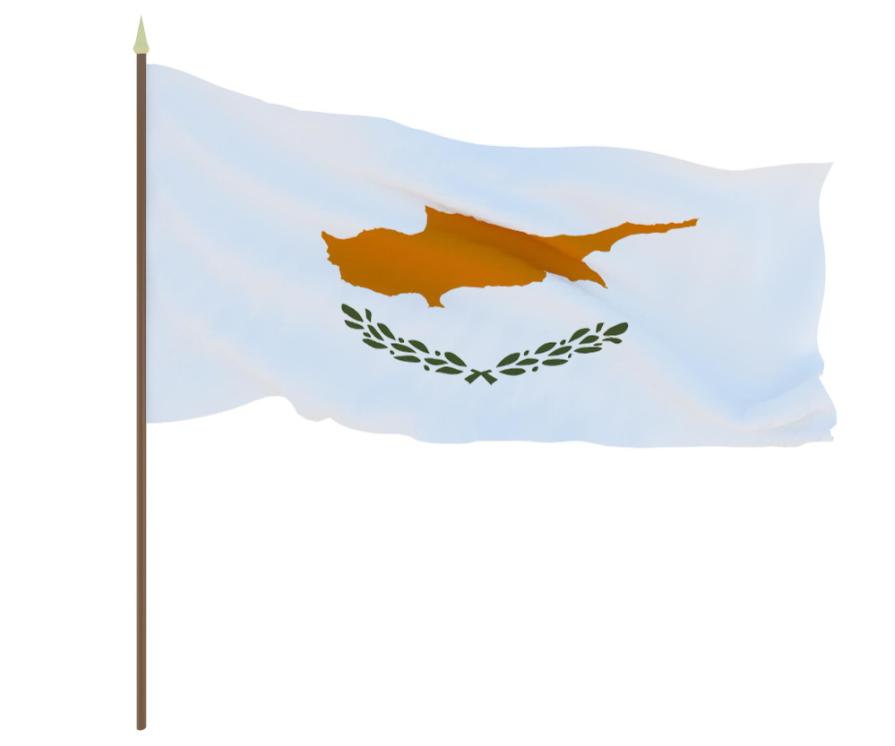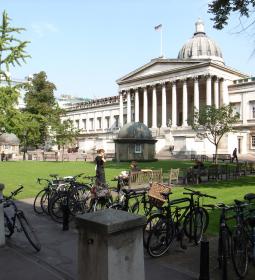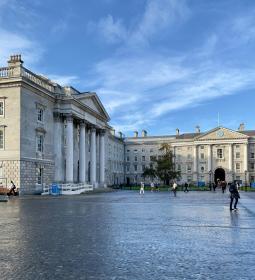The Republic of Cyprus owes the appearance of the national flag to the agreements in Zurich and London, which entered into force on August 16, 1960. Simultaneously with the proclamation of independence, it was decided to establish state symbols.
The flag project was designed by a drawing teacher named Ismet. When creating the new symbols, the British colonial administration was guided by the idea of interethnic reconciliation: two communities have long lived on the island - the larger Greek in the south and west and the smaller Turkish in the northern part.
In order not to cause associations with the flags of the Greeks and Ottomans, they used symbols with a neutral meaning, which was designed to demonstrate peace and harmony between the communities. In general, it came out, but not for long: already in 1963 the island split as a result of civil war and the escalation of interethnic and interfaith violence.
Historical process
Before the declaration of independence, Cyprus for quite a long time was an English colony called British Cyprus. From this period, several large naval bases and a legal system remained on the island. At the heart of the colonial was the corner Union Jack in the upper left part of the flag at the pole.
Before "releasing" the Greek Cypriots "into the wild", the colonizers presented them with a constitution according to which the flag was to have a color and design with a neutral meaning and be devoid of both Turkish and Greek colors and symbols: no central crosses and crescents.
There was even a project that was a white field with a brown-rusty letter "K". But neither the Greek leader, Archbishop Makarios III, nor the Turkish vice-president Fazil Kuchuk had an option. They held a competition, as a result of which the project of Ismet Günei was chosen - an art teacher from the Greek part of the island, but a Turk by birth. By the way, he died at the age of 77 on June 23, 2009, after five years of unsuccessful treatment of oncology.

Cyprus is the only country that demonstrates its territory on the official flag. The background of the flag is white, which symbolizes peace. In the center is a copper-colored map of the island, which reflects the historical attachment of Cyprus to this metal. Under the map of the island are the branches of an olive tree that symbolize peace.
The flag is used on land as a national and civil flag, and at sea as a national and civil flag. Many ships in the world run under the flag of Cyprus, as Cyprus has the third largest fleet in the European Union, with 16% of the total fleet of the 28 EU member states.
The Republic was not united for long under this flag – after the invasion of the Turkish army in 1963 and the proclamation of the illegal Turkish Republic of Northern Cyprus, the flag of the northern Cypriots, based on the flag of continental Turkey, is used in this part.
Initially, the law established certain colors and a ratio of 3: 5, but the amendments of 2005 made the color of the olive branches a little lighter, the copper map was darkened, and the shape of the branches was changed, as well as the proportions of the flag - it acquired the standard for most European countries 3: 2.
Cypriot flags are often made of arbitrary shapes and colors – there were frequent cases of artisanal manufacturing, but after the reform of 2005, the administration decided to standardize production over time. All incorrectly tailored flags should be destroyed, so as not to be bad. At least those that are used by government agencies.
The Constitution established that the flag must be ancesered by state institutions and government enterprises. Citizens are free to raise it whenever they want.
Use of flags of Greece and Turkey
The Constitution allows civilians to raise the flag of Cypriots along with the Greek and Turkish flags. It is allowed to use both at once. Other provisions govern the use of the flag by municipalities, universities and schools, army units and National Guard troops.
In fact, after the occupation of the north of the island by the Turks in 1974, only Greek is used. And in the north, respectively, only the Turkish one, since in this part there is a pro-Turkish puppet government, relying on the bayonets of military advisers.
Places where all three flags are raised, according to data for 2018, do not exist. But the executive authorities, such as the National Guard, local self-government, the Ministry of Education and the military, use the flag of Greece without any formal restrictions: there is no one to protest.
Proposed national flag
The international community that created Cyprus does not abandon attempts to reconcile the Greeks and Turks on some acceptable terms. For example, the Kofi Annan plan, proposed by the UN and aimed at a state settlement through the formation of a confederation of two entities - like Bosnia and Herzegovina.
The flag was also supposed to the state. In contrast to the existing one, the new national flag included both Turkish and Greek colors, as well as a large strip of copper-orange color, symbolizing directly Cyprus and the Cypriots.
The plan was rejected by the Greeks because it put them in a humiliating position.
National Emblem of Cyprus
The island has other symbols, in particular the coat of arms, depicting a wreath of olive green leaves framing a golden-copper armorial shield. On the shield - a dove with an olive t sprig and the inscription "1960" - it was then that the independence of the island was proclaimed.
The dove and the olive are symbols of peace.














